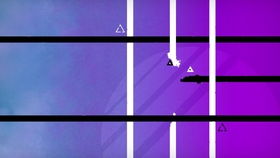Content:
Are you an angler looking to improve your fishing skills? Do you want to learn how to single-handedly catch fish with ease? If so, you've come to the right place. In this article, we will delve into the world of single-handed fishing and provide you with valuable tips and techniques to help you master this skill. Whether you're a beginner or an experienced angler, these insights will undoubtedly enhance your fishing experience.
Choose the Right Equipment
The first step in mastering single-handed fishing is to ensure you have the appropriate equipment. Here's what you'll need:
a. A single-handed rod: This type of rod is specifically designed for single-handed fishing and offers better balance and control.
b. Monofilament or fluorocarbon line: These lines are ideal for single-handed fishing as they are less likely to tangle and provide better sensitivity.
c. A reel: A spinning reel is typically used for single-handed fishing due to its ease of use and control.

d. Lures or bait: Depending on your fishing preferences, choose the appropriate lures or bait for the fish you're targeting.
Master the Basic Grip
To single-handedly catch fish, you must first learn the proper grip. Here's how to do it:
a. Hold the rod with your dominant hand: Your grip should be firm but not too tight. Avoid squeezing the rod too hard, as this can cause fatigue and reduce your sensitivity.
b. Position your thumb and index finger: Place your thumb and index finger on the rod's handle, forming a 'V' shape. This grip provides maximum control and stability.
c. Adjust your grip: As you fish, you may need to adjust your grip to maintain balance and control. Be flexible and adapt as needed.
Learn to Cast
Casting is a crucial skill for single-handed fishing. Here's a step-by-step guide to help you master it:
a. Load the rod: Begin by gripping the rod and bringing it back to your shoulder. Then, extend your arm and load the rod by bending it at the elbow.
b. Power the cast: Once the rod is loaded, quickly snap your wrist and extend your arm to propel the lure or bait. The faster you cast, the further it will travel.
c. Practice: Casting requires practice, so don't be discouraged if you don't get it right at first. Keep practicing until you can cast with accuracy and consistency.
Develop Sensitivity
Sensitivity is key to single-handed fishing, as it allows you to detect subtle movements in the water. Here's how to improve your sensitivity:
a. Pay attention to your rod: As you fish, be aware of any changes in the rod's position or movement. This could indicate a bite or other fish activity.
b. Adjust your rod tip: To increase sensitivity, slightly bend the rod tip. This allows you to feel the weight of the lure or bait and detect subtle movements.
c. Learn to read the water: Understanding the water conditions, such as currents and weed beds, can help you anticipate fish movement and improve your chances of catching them.
Proper Hook Set
Once you detect a bite, it's time to set the hook. Here's how to do it:
a. Keep the rod tip low: As the fish takes the bait, lower the rod tip to increase pressure on the line and prevent the fish from escaping.
b. Use a quick hook set: Once you feel the bite, quickly pull the rod tip upwards to set the hook. The faster you set the hook, the better your chances of landing the fish.
c. Keep your grip firm: Maintain a firm grip on the rod to ensure you don't lose the fish during the fight.
Reel in the Fish
Once you've set the hook, it's time to reel in the fish. Here's how to do it:
a. Keep the rod tip low: As you reel in, keep the rod tip low to prevent the fish from jumping or breaking the line.
b. Adjust your pressure: Apply consistent pressure on the line to keep the fish from swimming away. If the fish makes a sudden move, adjust your pressure accordingly.
c. Land the fish: Once the fish is close to the boat or shore, carefully net it and release it or keep it as desired.
In conclusion, mastering the art of single-handed fishing requires practice, patience, and a solid understanding of the techniques involved. By following these tips and techniques, you'll be well on your way to becoming a proficient single-handed angler. Happy fishing!












